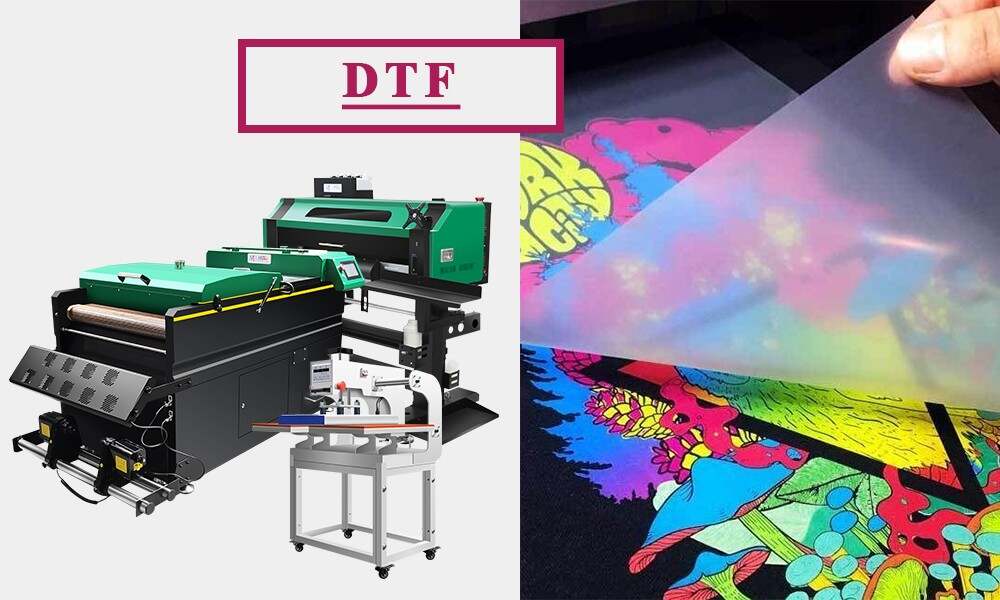DTF Printing Demystified: Every Little Thing You Required to Understand About Direct-to-Film
DTF Printing Demystified: Every Little Thing You Required to Understand About Direct-to-Film
Blog Article
Understanding DTF Printing: Advice for Getting Vibrant and Sturdy Prints
In the world of textile printing, attaining resilient and vivid prints is a sought after skill that can raise the top quality of your result. From picking the appropriate materials to fine-tuning print settings and improving post-printing completing strategies, there are many variables that can affect the end result of your prints.

DTF Printing Fundamentals
For those new to the world of textile printing, understanding the principles of DTF printing is necessary to understanding this ingenious method. Direct to Film (DTF) printing is a modern-day technique that includes transferring layouts from an unique movie onto numerous fabrics utilizing a warm press. Unlike traditional approaches like display printing, DTF provides advantages such as vivid shades, complex detailing, and the capacity to publish on diverse products like cotton, polyester, and blends.
The process begins by printing the layout on a special DTF movie utilizing a compatible printer with CMYK or CMYKW ink collections. When the design is published, it is then healed with a warm press to create a long-lasting and sturdy print. DTF printing is understood for its ability to duplicate complicated designs with high accuracy and color accuracy, making it a popular option for businesses aiming to develop customized garments, promotional things, and much more.
Picking the Right Materials

Equally essential is the selection of the sticky powder. The sticky powder serves as a bonding agent between the printed design and the fabric, so it needs to have solid bond homes to make sure a resilient and long lasting transfer. Different fabrics may require different kinds of glue powders, so it is critical to match the powder to the textile kind for ideal results - DTF Printing. By very carefully selecting the ideal materials for DTF printing, printers can enhance the top quality, vibrancy, and long life of their prints.
Enhancing Publish Setups
When intending to accomplish the best lead to DTF printing, precise focus to enhancing print settings is critical for making sure premium and exact transfers onto textiles. One crucial aspect to take into consideration when optimizing print setups is the resolution. Greater resolutions generally lead to sharper and more in-depth prints, enhancing the general high quality of the transfer. Furthermore, readjusting the ink thickness can assist guarantee and achieve vivid colors that the style attracts attention on the fabric.
An additional vital setup to optimize is the print speed. Discovering the appropriate equilibrium in between rate and top quality is essential. While enhancing the speed can improve effectiveness, it might endanger the last print's clearness and shade saturation. Trying out various rates and observing the results can assist establish the optimal setting for look at here each print job - DTF Printing.
Additionally, adjust color profiles and ensuring correct shade administration are vital for accomplishing accurate and consistent shades across various prints. By adjusting color settings and accounts, printers can lessen color discrepancies and produce consistent results, enhancing the total print high quality and customer complete satisfaction.
Preparing Artwork for DTF Printing
Transform the art work to CMYK shade setting to make certain that the colors convert properly from screen to print. Keep in mind to mirror the last layout prior to click over here now printing to guarantee that it transfers appropriately onto the garment. By complying with these steps and paying close interest to the information, you can prepare art work that is optimized for long lasting and vivid DTF prints.
Post-Printing Finishing Techniques
Executing efficient post-printing completing methods is crucial to enhancing the sturdiness and aesthetic charm of DTF prints on fabrics. When the printing procedure is full, using warmth to the published layout is essential (DTF Printing). Heat not just help in healing the ink however likewise makes certain that the shades are vivid and durable. A warmth press machine evaluated the recommended temperature and stress setups can assist accomplish optimal results.
After warmth pressing, peeling off the PET movie very carefully is an essential step. This procedure must be done slowly and continuously to protect against any type of damage to the print. As soon as the film is removed, the print might require extra healing time to better establish the ink right into the fabric. This action helps enhance the washability and sturdiness of the print, ensuring it can withstand numerous wash cycles without fading or fracturing.
Additionally, trimming any kind of excess film around the style can give the last print a clean and expert appearance. Taking the time to appropriately finish DTF prints post-printing can substantially influence the overall quality and long life of the fabric layout.

Verdict
To conclude, understanding DTF printing needs an extensive understanding of the fundamentals, picking proper materials, optimizing print setups, preparing art work efficiently, and making use of post-printing ending up techniques. By complying with these pointers and methods, one can accomplish vivid and sturdy prints that fulfill their desired high quality requirements. Regular technique and focus to information are essential in achieving effective end results in DTF printing.
From picking the right materials to fine-tuning print settings and perfecting post-printing finishing techniques, there are various elements that can influence the result of your prints. Unlike standard approaches like display printing, DTF uses see post advantages such as dynamic colors, intricate detailing, and the ability to publish on diverse materials like cotton, polyester, and blends.
Once the design is published, it is after that treated with a warm press to create a resilient and lasting print.When intending to achieve the ideal outcomes in DTF printing, precise attention to optimizing print setups is critical for making certain specific and top quality transfers onto fabrics.In final thought, mastering DTF printing calls for a detailed understanding of the fundamentals, selecting ideal materials, enhancing print settings, preparing art work successfully, and utilizing post-printing ending up methods.
Report this page